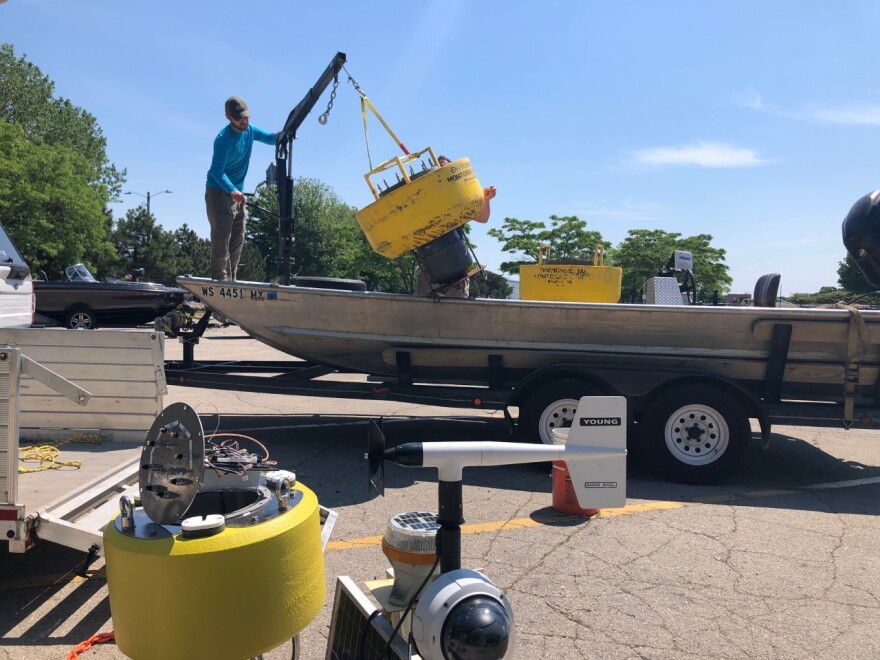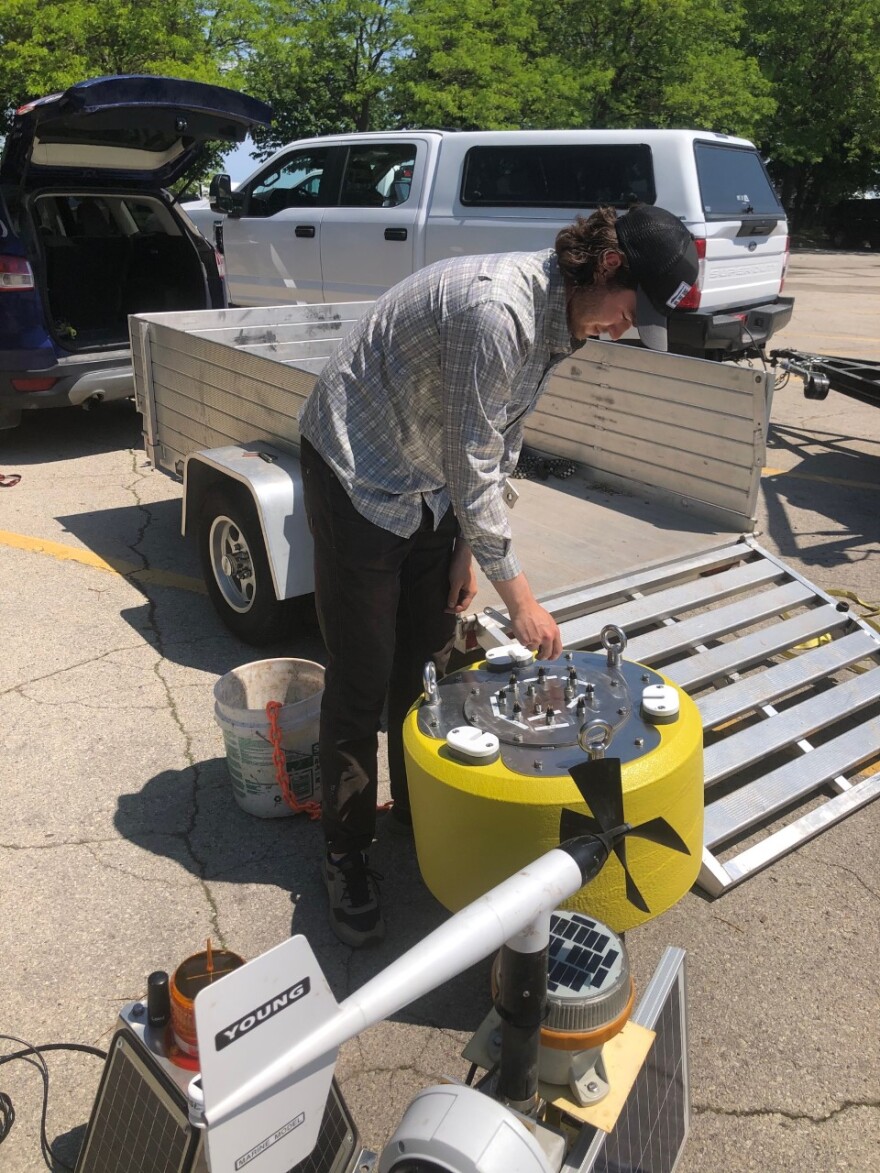Researchers are increasingly concerned about how run-off from farm fields is ending up in lakes and other water bodies, and in some cases feeding algae that can be toxic. A UW-Milwaukee scientist is leading an effort to advance research while protecting aquatic and public health.
READ Milwaukee Researcher Prescribes Science & Nature To Solve Toxic Algae Problem
Some of that research is happening in the bay of Green Bay, Chris Houghton's home base. Houghton is a fish and aquatic habitat researcher with UW-Green Bay.
“We have a couple of different projects working on HABs,” says Houghton. HABs stands for harmful algal blooms. They are a chronic problem in Houghton’s world.
"If you go out here, you’ll see the harmful algal bloom and we also have a dead zone that occurs in the lower bay," he says.
Nutrients, not the toxic kind, are a critical piece of the aquatic food chain. But here, loads of nutrients, mostly phosphorus and some nitrogen make their way into the bay from farm fields upstream in the Fox River. The nutrients fuel the production of cyanobacteria, commonly known as blue green algae.
Houghton says concern compounds among scientists and public health officials alike when someone or something ingests algae that is toxic.
“You don’t let your dog swim in it because your dog might die, literally. But the fish are probably swimming around it and eating and doing all their normal things and not really being affected too strongly," he says. "All that stuff dies, falls down to the bottom of the lake and then you get zero oxygen in the water; that’ll kill a fish really fast."
Houghton and his students are working to try to shift the tide when it comes to algae. Houghton is working with UW-Milwaukee environmental health researcher Todd Miller to study the issue.
"We have the boats and facilities up here that we can work with them to get their equipment in the water. We also help with some of the data analysis and monitoring of harmful algal blooms in Green Bay," he says. "So our students go out and get the samples and send them down to the lab down in Milwaukee."

Miller arrives with a trailer full of data-gathering buoys and solar panels to power them.
“One of the main drivers of our research is try to understand what are conditions that promote toxic algal blooms, and instead of being able to just monitor from a boat once a week taking a water sample, these data buoy systems are out there collecting data 24/7 and reporting the data in real time,” says Miller.
Two of the buoys are big, each weighing over 100 pounds. It will take three people and a small crane to place them in the bay.
Each buoy, the size of a large inner tube, is painted bright yellow with two solar panels anchored up top along with a spinning wind vane. The web of sensors buried in the middle monitors everything from the wind's speed and direction to the water’s pH. The data is transmitted to a website Miller’s lab created, called lakestat.com.

“Now the other thing we can do on top of that is apply our statistically models and algorithms to try and predict when there will be a bloom,” Miller says.
He is especially excited about the much smaller, Panther buoy. It's named for the UWM mascot and was designed and built by Miller and his students. Miller says they tinkered with the creation for eight years.
“Lot of mistakes, one fire. Yeah, you’re messing around with electricity and wires that can get caught and pinched,” he says. “Luckily, I work with a lot of smart students.”
This is the Panther buoy’s first official assignment. It costs a fraction of the large industrial model and is far more energy efficient. Miller received funding to build more systems with his students’ help.
Sarah Bartlett is one of Miller’s former students. She landed a job in Green Bay as water resources specialist with the sewerage district. It’s among the local partners in Miller’s algae research.

Bartlett’s department gathers water samples in strategic spots within and upstream from the bay. "So together, everyone has a role,” she says.
Bartlett is proud to be contributing to this research. “They are a global problem. We just don’t know exactly how cyanotoxins, how they affect really humans,” she says. “So if we can do research on where they are in Green Bay and if we can do anything to kind of help public health, you can’t put a value on that."
Bartlett ferries us three miles out into the bay to watch Miller and his crew deploy one of the giant buoys. This isn’t the only place Miller’s team plans to use the Panther buoy to collect data on dangerous algae.
“The nice thing about it is it doesn't cost hundreds of thousands of dollars, and it's small and compact; could be lifted by a single person and deployed by a single person from a small boat,” Miller explains. “Lots of lakes need to be monitored."
Later this summer, Miller will be moving the Panther buoy to Lake Superior. It will play a role in a massive effort to figure out what’s causing algal blooms on that very cold, very deep Great Lake.
READ Commission Offers U.S. And Canada Recommendations To Improve Great Lakes Water Quality
"I think the blooms are so new in Lake Superior that we need more information to try an understand what's causing them,” he says.
As an increasing number of lakes seem to be impacted by the problem, scientists are experimenting with ways to reduce or rid bodies of water of toxic algal blooms.
In the meantime, Miller says the most pressing need is to let communities know in real time where blooms are and when people need to stay out of the water.
Have an environmental question you'd like WUWM's Susan Bence to investigate? Submit below.
_







